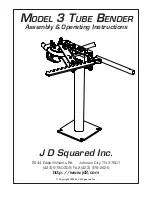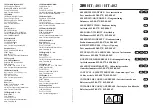
IACER Srl
17
MNPG178
local anaesthetic effect, TENS burst which is a mix of the first two types of
TENS.
The rehabilitative action of TENS is represented by its power to reduce
pain thereby restoring physiological conditions; most of the time this
allows the patient to regain normal motor function. Consider a patient
suffering from irritating periarthritis; the patient usually resorts to use
analgesics or learns to live with the pain, which often makes even the
simplest movements impossible. Immobility reduces metabolic activity
making it impossible to eliminate allogenic substances. So, a vicious circle
begins. In addition to relieving pain, TENS causes induce muscle
stimulation increasing metabolic activity and blood flow and improving
tissue oxygenation with an intake of nutritional substances. Therefore, the
positive effect can be amplified by combining TENS with muscle
stimulation of the area concerned.
Electrodes’ positioning and intensity levels
The electrodes should be positioned to form a square over the painful zone
by using the channel 1 and channel 2 as shown above in
Figure 2
(positioning of the red electrode at the top/black one at the bottom is
irrespective of the type of therapy, refer to the
Positions manual
). The
intensity should be adjusted to a level between the thresholds of
perception and pain: the maximum intensity level is the moment in which
the muscles surrounding the treated area begin to contract; over this limit
IMPORTANT
Create a square area with the electrodes
over the painful zone. Keep 4cm
minimum distance between the
electrodes.
Figura 2 – Electrodes’ positioning.
















































